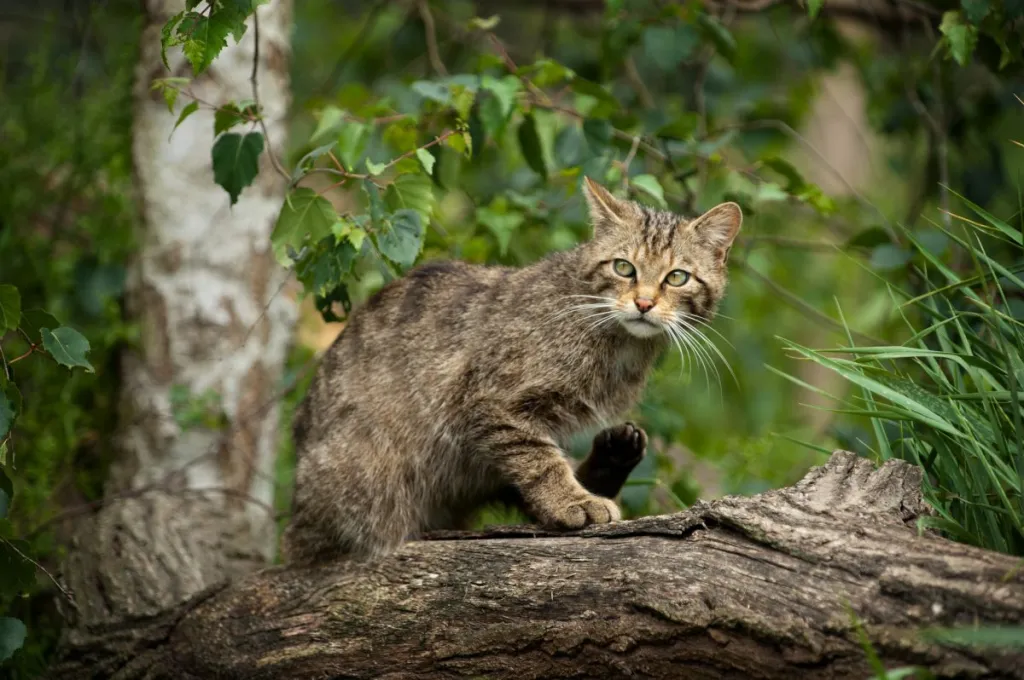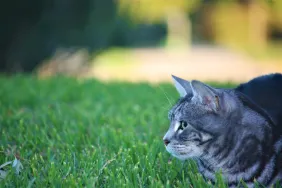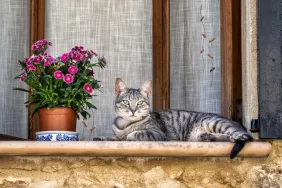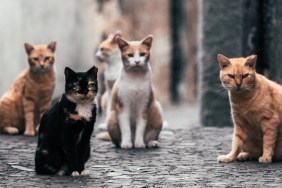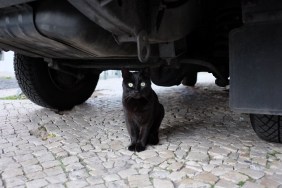The instinctual hunting drive in cats is undeniable. So, when an outdoor feline brings a “present” to their human’s doorstep, it is hardly surprising. However, as a student pursuing a degree in veterinary medicine at the Texas A&M School of Veterinary Medicine and Biomedical Sciences (VMBS), Molly Guyette brings an alarming fact to light. According to her, the hunting behavior of free-roaming cats may pose a threat to both themselves and the local wildlife, causing serious injuries and diseases.
The ecological threat of free-roaming cats
Guyette — who is studying cats and their impact on zoonotic diseases and wildlife health as part of her master’s degree program — says that outdoor cats often bring home prey like mice or birds only once in a while. However, this is merely a tiny fraction of what they are capable of.
“As natural predators, cats have natural instincts passed down through generations that allow them not only to hunt for food to kill and eat but also to kill prey, even if they’re not looking for a meal,” she explained. Guyette is conducting her research under the guidance of VMBS professor Dr. Sarah Hamer.
Domestic house cats and other cats allowed to roam freely can wreak havoc on native ecosystems since they will hunt any small animal that crosses their path — including lizards, birds, and rabbits.
Guyette revealed that research indicates free-roaming cats in the United States are responsible for the deaths of an estimated 4 billion birds, 22.3 billion mammals, and 1.1 billion amphibians and reptiles every year. Even more disturbingly, domestic cats have caused the extinction of no fewer than 63 species of birds, mammals, and reptiles.
In an article published in the Wildlife Rehabilitation Bulletin on Oct. 7, 2022, researchers found that feral cats rank as the second largest threat to the survival of wild birds. Furthermore, habitat loss has reduced areas of shelter and refuge for birds, making them even more vulnerable to predation by felines.
As a result, Guyette emphasizes the importance of keeping cats indoors as the most effective method of preventing their harmful effect on wildlife.
Bell collars are effective ‘alarm system’ to alert wild animals

For those cat owners who struggle to keep their pets inside, Guyette suggests investing in an “alarm system” such as a bell collar. “While warning devices won’t prevent the predation of nestlings (baby birds) or eggs, and not all wild animals are deterred by them, the use of bells, colorful bibs, or sonic devices on cats can help some wild animals hear or see when a cat is close so that they can flee,” she said.
Furthermore, owners should carefully consider why their cat is heading outside in the first place, as this will determine the extent of safety measures necessary.
“If your cat loves the outdoors, lying in the sun or playing in the grass, you should let them do so either in an enclosure or leashed and under direct supervision,” Guyette advised. “If cats are kept outdoors due to unwanted behaviors, such as scratching, not urinating and defecating in appropriate areas, or acting aggressively,” however, then it’s time to take a different tact. In those cases, Guyette suggests, “owners should discuss options with a veterinarian for managing such behaviors and helping their cats feel more comfortable inside.”
The benefits of keeping felines indoors
Encouraging your pet to stay inside can also help them live a longer and healthier life. As per researchers at the University of California-Davis, cats who wander outside live a significantly shorter life compared to those who reside indoors.
With a lifespan of only two to five years, compared to an indoor cat’s 15-17 years, free-roaming felines are susceptible to a number of risks. These dangers range from contracting infectious diseases from other animals to picking up worms, fleas, and ticks. The greatest risk of all is the potential for moving cars or predators like coyotes and dogs to fatally injure them.
How cats contract and spread diseases
Irrespective of whether cats reside indoors or outdoors, it is crucial for owners to ensure that their pets are vaccinated against disease-causing microorganisms that could potentially spread from one cat to another, wildlife, or even humans.
Rabies is a prime example of such a disease, which is why it is a state law for all cats to receive a vaccination against it. Guyette explained, “Preventing the spread of rabies is of utmost importance because the rabies virus can easily spread through bites or scratches from infected animals, leading to neurological signs (like seizures or paralysis) and death.” She further continued, “Typical suspects that are at a higher risk for transmitting rabies to cats include bats, skunks, foxes, coyotes and raccoons.”
Toxoplasmosis — caused by the parasite Toxoplasma gondii — is another disease that can be transmitted between cats, other animals, and humans. Its symptoms include fever and fatigue, and — if left untreated — it can likely lead to eye damage.
“Cats are critical in the transmission of toxoplasmosis because the disease requires a cat as part of its life cycle,” Guyette stated. Cats contract the infection when they ingest a contaminated host — like a rodent or raw meat. Infected cats then release the parasite for a period of less than two weeks. However, if the parasite develops in cat feces for over 24 hours, it can become communicable to others — especially posing a risk to pregnant or immunocompromised individuals.
Lastly, Guyette revealed that external and internal parasites — like fleas, ticks, roundworms, and heartworms — could act as potential carriers of diseases between cats and wildlife. Interestingly, outdoor cats are more susceptible to transmitting these parasites and other diseases due to their constant contact with the environment.
Keeping free-roaming cats safe and healthy indoors
While we may adore the sight of free-roaming cats, we cannot disregard the potential threats they pose to themselves as well as the ecosystem. Protecting them from diseases, curbing the spread of infections, and ensuring a long, healthy life should be top priorities for all responsible cat owners. As such, exploring ways to keep your precious kitty indoors may be a wise choice.
